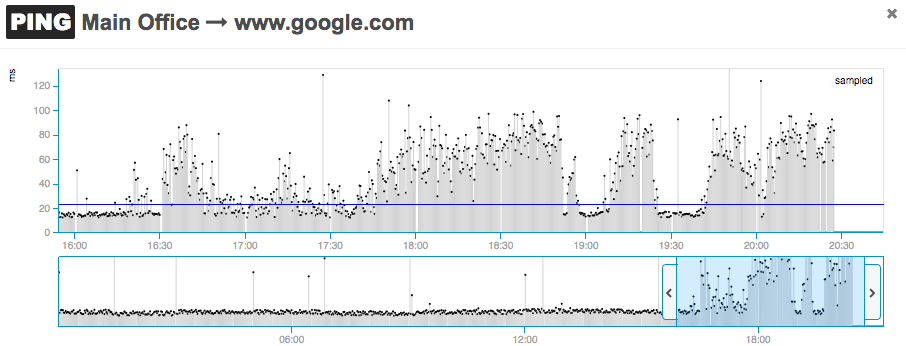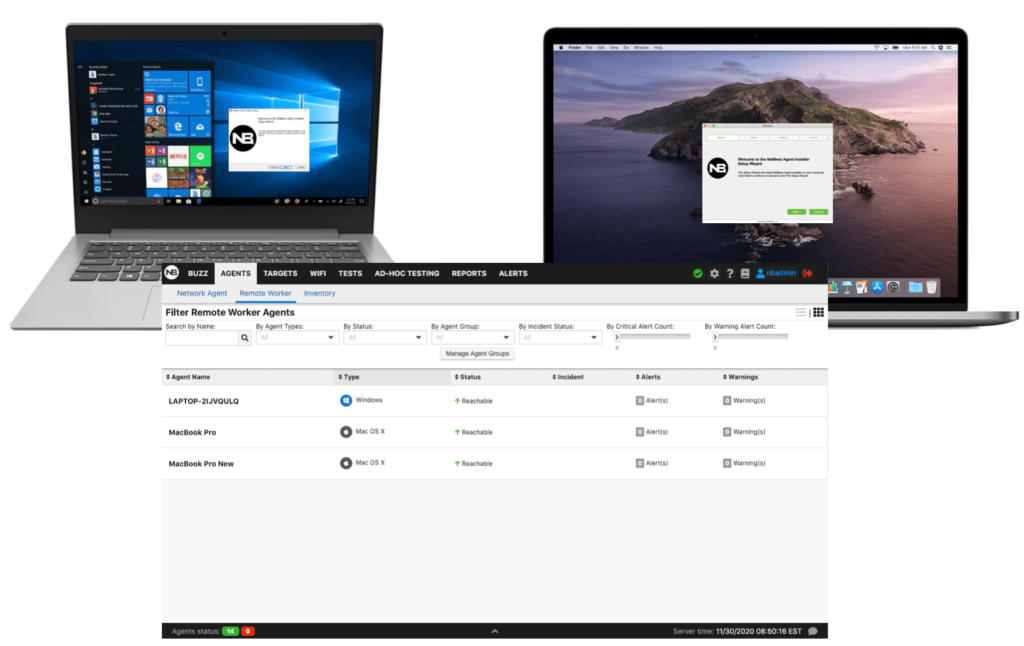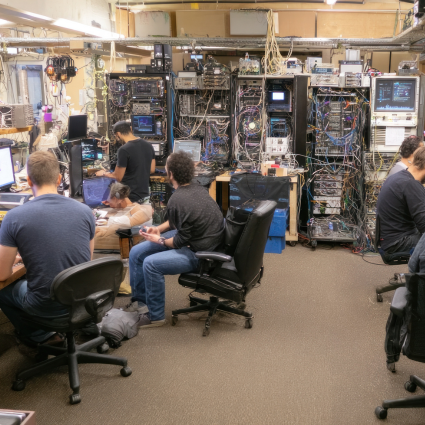Introduction to End-User Experience Monitoring
End-user experience monitoring (EUEM) is a network monitoring approach that simulates user interactions with web applications, SaaS, and digital services. The purpose of EUEM is to assess the availability and performance of digital resources from the user perspective. End-user experience monitoring helps network administrators detect and fix issues before they impact users.
Understanding and implementing such a solution is important for organizations that heavily rely on digital communications. By using EUEM, organizations can achieve better business outcomes through improved service reliability and enhanced user satisfaction.
Benefits of End-User Experience Monitoring
Organizations adopt end user experience monitoring tools for three main reasons:
- Detect issues before users contact the help desk. A proactive approach helps improve the end-user experience. This reduces the workload on the help desk, allowing them to take quick action.
- Reduce the time to resolution. End-user experience monitoring tools can help identify where the problem lies. They can determine if the issue is with the user’s device, the network, or the application. This built-in fault isolation helps diagnose issues quickly and reduces overall troubleshooting time.
- Reduce ticket escalations to higher support levels. End-user experience monitoring tools help help desk agents manage more tickets. This cuts down the need for skilled engineers for tech support calls.
Impact on Performance and Business Success
Organizations that effectively implement end-user experience monitoring solutions unlock numerous advantages that enhance their business performance, such as:
- Cost efficiency – IT teams that find problems early can reduce troubleshooting time. They use end-user experience data to minimize downtime. End-user experience monitoring also simplifies troubleshooting and reduces the resources and personnel involved.
- Improved user satisfaction – By monitoring network and application performance from the user’s perspective, businesses can analyze and optimize services’ usability and performance.
- SLA compliance – EUEM tools help organizations maintain digital services that meet business performance standards for customers, employees, and partners.
- Increase productivity – For internal applications, monitoring end-user experience ensures employees have reliable access to critical tools, preventing bottlenecks and boosting productivity.
Challenges in Traditional Monitoring Approaches
Traditional network performance monitoring tools are not capable of monitoring the end-user experience. For instance, generic network monitoring tools track the status and performance of network devices and servers. To set up this monitoring software, the administrator must configure network devices. These devices need to respond to requests from the monitoring tool.
SaaS applications cannot support this because third parties host them. Additionally, these applications often rely on the public internet, that is a shared infrastructure managed by different parties. Monitoring end-user experience for SaaS applications and digital services requires a different approach than traditional device or application performance monitoring. This new approach is part of a Digital Experience Monitoring (DEM) strategy of an organization.
Key Strategies for Effective End-User Experience Monitoring
Effective End-User Experience Monitoring requires a combination of key strategies to ensure optimal performance and user satisfaction. These tools give insights into application response times. They link changes from the baseline to find possible causes, like a slow internet connection or a weak wireless network.
Collecting User Experience Metrics
EUEM tools collect performance metrics that help measure user experience. These metrics include network performance statistics, error rates, and application performance measurements from the user perspective:
- Network latency – The time that it takes for the network to forward data packets.
- Packet loss – The number of packets that fail to reach their destination.
- DNS response time – The time that it takes to perform a lookup query from URL to IP address.
- Web page load time – The time required to load the content of a web page.
Some EUEM products break down the user journey into individual response times, while others aggregate them. Other important user experience metrics include user device statistics, such as:
- Download and upload speed – The maximum speed available to download or upload a file over the Internet.
- Wireless signal quality – The quality and strength of the wireless signal, if applicable.
- Operating systems statistics – Device performance monitoring tracks CPU, RAM, and disk resources. It ensures there are no issues on the host.
Utilizing Real-Time Data Analysis
Real-time processing of end-user performance data helps detect problems early. It also aids in identifying the root cause and minimizing network downtime. EUEM tools store and process data to create a performance baseline. This helps identify deviations and potential issues.
Two main alerting strategies make early identification possible. The first one compares a real time performance metric against its baseline to detect sudden changes. The second one compares a real time performance metric against a fixed value. This method helps enforce a certain user experience or comply with a specific service level agreement.

Network Monitoring Agents
The architecture of a EUEM tool includes a central server and a set of distributed network monitoring agents. The server instructs the agents on what tests to run. The agents send data in real time to the server for processing, visualization, and alerts on performance issues.
The agents are dedicated hardware or software appliances for enterprise or cloud networks, or software clients for user devices. The endpoint agents provide a clear view of the digital employee experience at remote and home networks.
Tools for End-User Experience Monitoring
EUEM tools should be used by any organization that heavily relies on digital communications. There are two main capabilities that end-user experience monitoring tools implement to monitor user experience: Synthetic Monitoring and Real User Monitoring (RUM). These two end user monitoring techniques are different in their function yet complementary.
Synthetic Monitoring
Synthetic monitoring is a performance analysis technique that relies on automating continuous network and application testing via scripted transactions. These transactions mimic real users interacting with SaaS applications and digital services to quickly identify issues and their causes. For this reason, people also call synthetic monitoring active network monitoring. The approach benefits by constantly running tests from multiple monitoring points, providing real-time monitoring of application availability.
Real User Monitoring
Real User Monitoring (RUM) tracks the interactions of actual users with an application, website, or service. This performance monitoring technique analyzes this data in real time to monitor performance.
Unlike synthetic monitoring, which simulates user actions, RUM collects data from actual user sessions. This provides an accurate view of the application’s performance in real-world conditions. For this reason, people also call Real User Monitoring passive monitoring.
Implementing End-User Experience Monitoring with NetBeez
NetBeez is a digital experience monitoring solution that monitors network connections and application performance from the user perspective. NetBeez offers both hardware and software appliances for enterprise and cloud networks. It also supports Windows and Mac software clients for users’ endpoints. The agents capture the real user experience, providing proactive notification of end-user experience issues.

The NetBeez monitoring dashboard provides key performance metrics to understand the end-user experience, such as:
- SaaS application performance monitoring (APM)
- VoIP performance
- DNS availability and query time
- Internet speed and availability
- WiFi performance
- VPN connectivity and performance
Conclusion
Unlike traditional tools, EUEM is vital for tracking user experiences, especially with SaaS applications. It helps businesses detect problems early and optimize performance. By monitoring key metrics, EUEM improves user satisfaction, boosts productivity, and ensures SLA compliance. This makes it an essential part of a company’s digital performance strategy.
NetBeez offer a simple network monitoring from the user perspective solution that it easy to deploy and scalable. Request a product tour or start a free trial if you want to learn more.





